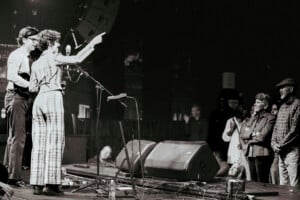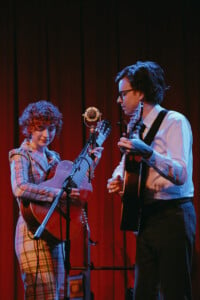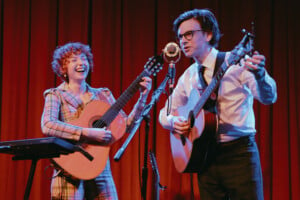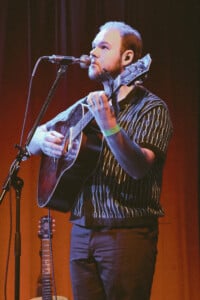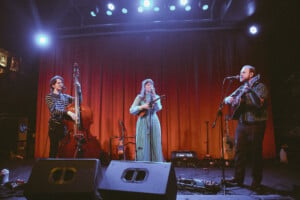I have aphantasia—no ability to create images in my mind, or to remember things in a visual way.
For well over half of my life I lived under the assumption that suggestions to visualize things were entirely metaphorical, and also that I was incredibly stupid in certain ways, finding things that everyone else seemed to find easy a challenge. I struggle to learn graphical interfaces, I’ve mixed up speakers and their talks at conferences, I spend a lot of time staring at icons on my phone—as far as I’m concerned every blue icon leads to the same app.
I store information as lists. For people I see a lot, I could probably draw a reasonably accurate picture of them, based on the list of data I’ve collected. However that information can never be as detailed as being able to recall an image could be. For example, perhaps you are someone I work with. I see you several times a week on video calls. I know lots of things about how you look, including that you wear glasses. However, your glasses were unremarkable to me and so I’ve not stored any particular information about them. You could dramatically change your style of glasses, I’d not notice. I’m not comparing a visual memory of you from a few days ago, I just know you wear glasses.
If I’m visiting a new place and I go for a run, I collect data points along the way to navigate back. I will not remember how the route looked. This means that I can be incredibly good at taking people somewhere that I’ve only been once, I’ve got turn by turn directions. However, if I am walking with someone and talking, or for some reason don’t actively collect information, I’m doomed. The other week I lost an entire car park, never mind my car, due to having been distracted by a message after leaving the car park and failed to collect any information about what it looked like.
I dream, but not in pictures. For example, I have a recurring dream where I’m back in a theatre, putting on pointe shoes. I know it’s a theatre because of the smell, I feel the roughness of the shoes as I put my feet into them, the creak of the leather sole as I roll through my foot. I can feel that dream as I write about it, but there’s no image involved.
When I learned about aphantasia about ten years ago, suddenly so many things made sense. It’s harder to remember certain types of things if you have no visual memory of them. I’m not an awful person because I didn’t remember that I’d met a person before, there was no way for them to look familiar to me. However, I also think it’s at the root of some of the things I’m really good at.
My lists of information, are closer to a relational database than just a set of lists. It’s no surprise to me now that I always enjoyed working with databases and could design a complex schema without needing to sketch out a diagram. I’m constantly making connections between these bits of information. Many of these connections are just amusing to me, but other times they bring up interesting paths to investigate.
I context switch very easily, I can jump between these information sets without losing my train of thought.
I can write entire articles, documents, or conference talks in my head while out for a run. It’s usually quicker for me to create content in this way than sit at a computer and think about it. I can come in from a run and type out 2,000 words, transferring what I’ve written in my head to the document.
Having discovered this about myself, I’ve found plenty of other people who experience the world in the same way, probably unsurprisingly as people with aphantasia tend to be drawn to computing and science. I find it fascinating that we are all experiencing the world so differently, and how that can so fundamentally impact the things we find easy, or difficult.






